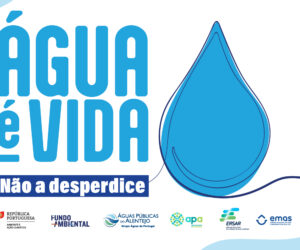EDIA: Company launches tender for the biggest photovoltaic project.
The Enterprise Development and Infrastructures of Alqueva (EDIA) launches tender for the largest floating photovoltaic project in Europe.
 EDIA is preparing to launch a contractual procedure for the provision, installation and licensing of 10 Production Units for Self-consumption (UPAC) near the pumping stations of the Primary Multi Purpose Alqueva Venture Network (EFMA). The competition will also include the maintenance and operation during the first 5 year old.
EDIA is preparing to launch a contractual procedure for the provision, installation and licensing of 10 Production Units for Self-consumption (UPAC) near the pumping stations of the Primary Multi Purpose Alqueva Venture Network (EFMA). The competition will also include the maintenance and operation during the first 5 year old.
This project includes the installation of 10 floating photovoltaic plants with a total installed power 50 MWp and will occupy an area of ​​about 50 hectare of water, estimated to be needed over 127 thousand photovoltaic panels to avoid the emission of about 30 tons of CO2 per year.
With an estimated production of 90GWh / year, the energy obtained by the set of these photovoltaic plants would be enough to power about 2/3 the entire population of the Alentejo.
This will be the largest floating photovoltaic project in Europe and will base price 50 Millions of euros, funded in 45 Million Euros by the Development Bank of the Council of Europe and 5 Million equity EDIA.
The largest of these 10 floating photovoltaic plants will have an area of 28 hectares (is per se the largest in Europe) and will be located next to the pumping station of Los Alamos, the largest pumping station Alqueva project.
The energy issue is crucial to the sustainability of the Alqueva project, since it is the main source of variable costs in the distribution of water. Sustained reduction of energy costs in the EFMA exploration operations is a goal to keep the edia in the coming years, until you can achieve maximum optimization point of the entire infrastructure.
Accordingly IUPAC energy produced by photovoltaic panels will be mounted on floating structures, and directed to the pumping stations that are dedicated to them for self. Only when this energy is not enough or when there is a surplus, will be bought (or sold) the network in market conditions, currently in effect.
The distinguishing element of this project is based on the need to resort to neighboring water bodies of those sites of large electrical consumption for plants producing facilities and one of the features of these photovoltaic plants relates to its integration into the landscape, They will stay or hidden in the reservoirs whose quota is above the visual horizon, or in remote locations of the main roads, overwhelmingly.
The introduction of photovoltaics in EFMA, through the installation of a large photovoltaic park, It is an unavoidable priority, is the economic level, is the environmental sphere, follows the global trend of investment in renewable and makes particular sense in an area with excellent levels of solar radiation.
The installation of these plants in the vicinity of pumping stations that consume the electricity generated will, beyond the respective decarbonisation, the elimination of transmission losses and the reduction of power applied to the network, generally during the summer and especially during peak periods.
It is recalled that the Fins Development of Multiple Alqueva has already installed several photovoltaic plants, including on the roof of its headquarters building in Beja, 5 small production units (UP) and a floating center 1MW under construction (attached photos).
Photovoltaic energy production technology in water level has reached a remarkable maturity over 1 GW installed globally and a huge potential for development. The new areas of expansion of the Alqueva irrigation areas will happen in the coming years will also be equipped with this technology with one of the solutions to reduce the energy bill of the entire Enterprise.
Photo: Photovoltaic Central Cuba, Setup in Cuba This reservoir.
























